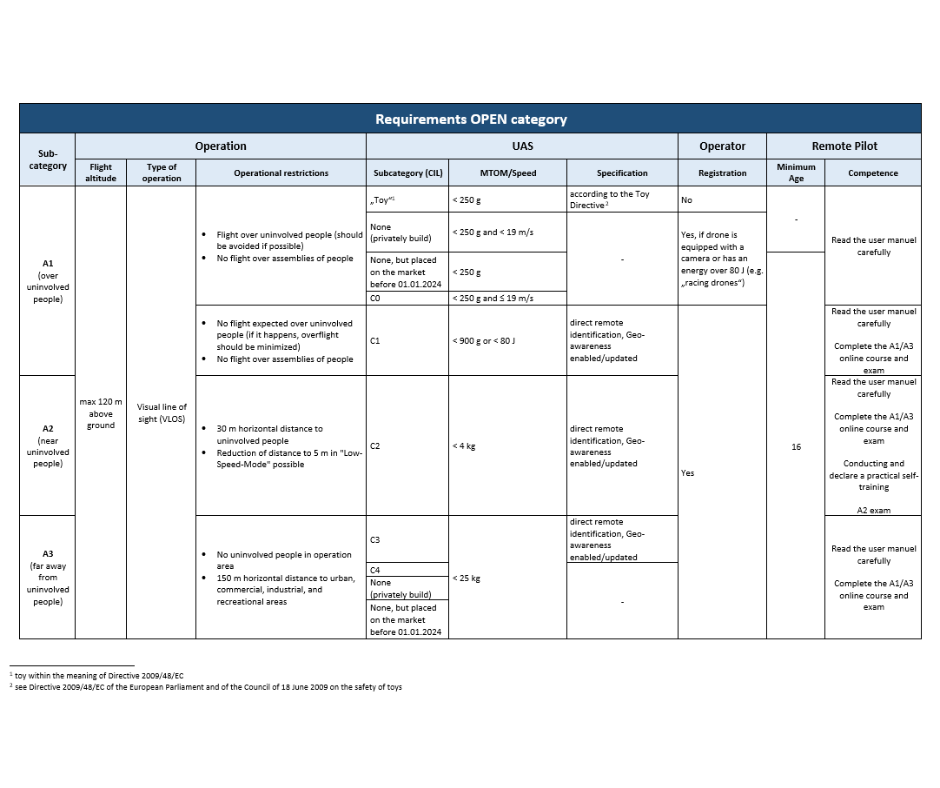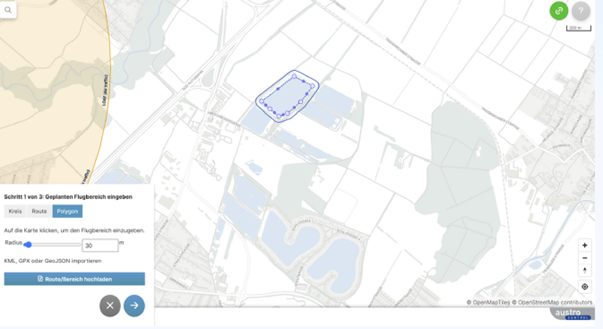The provisions and requirements of Regulations (EU) 2019/947 and (EU) 2019/945 apply not only to conventional drones but also to model aircraft. There is no distinction between drones and model aircraft; instead, the unified terms UAS (Unmanned Aircraft System) or UA (Unmanned Aircraft) are used.
It is irrelevant whether the UAS is a quadcopter, helicopter, fixed-wing aircraft, or any other type of unmanned aerial vehicle.
In general, UAS operations are categorized into three operational categories: "Open", "Specific," and "Certified" . Due to the harmonization of regulations, these categories also apply to model aircraft. However, the "Certified" category can be disregarded in this context, as it is specifically intended for commercial operators of highly advanced UAS.
For the operation of model aircraft, only the "Open" and "Specific" categories are applicable.
"Open" Category Operations
For many model aircraft pilots, operating within the "Open" category is the simplest and most accessible option. As long as the limits of the "Open" category (weight, flight altitude, visual line of sight, airspace, distance) are respected, no prior operational authorization from Austro Control GmbH is required.
However, it is essential that:
The model aircraft pilot has completed the mandatory online course and passed the online exam for the A1/A3 remote pilot certificate (free of charge). The operator of a model aircraft over 249 g is registered as a UAS operator, which currently costs €39.60 every three years.
The "Open" category is further divided into three subcategories: A1, A2, and A3. The following table provides an overview of what a remote pilot is allowed to do with a model aircraft in different environments and situations, along with the specific requirements.
Since many self-built model aircraft do not have a CIL (Class Identification Label), the A3 subcategory is particularly relevant for model aviation enthusiasts.
For example, in the A3 category, it is possible to operate model aircraft up to 25 kg at an altitude of up to 120 m in an open field, as long as the operation remains at least 150 meters away from residential, commercial, industrial, or recreational areas. No additional approval is required unless the location falls within special-use airspace or near an aerodrome.



